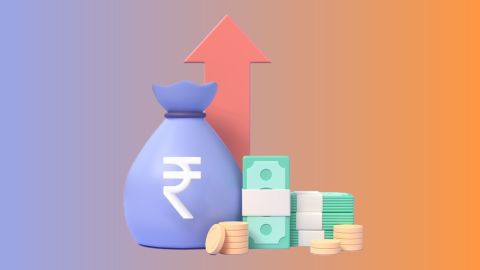To enhance affordability and support social welfare, the GST Council has introduced key rate reductions on essential goods and services.
GST Rate Reductions Effective from September 22, 2025
Category
|
Previous GST Rate
|
New GST Rate
|
Applicability
|
Vehicles retrofitted for persons with disabilities
|
Not specified (typically 12%)
|
5%
|
This reduced rate makes specially adapted vehicles more accessible and affordable for individuals with disabilities.
|
Cancer treatment drugs (e.g., Keytruda)
|
12%
|
0% (Exempt)
|
GST has been fully waived on select life-saving medications for cancer and other serious illnesses, offering major relief to patients.
|
Goods sold at Indo-Bangladesh border haats
|
Not specified
|
0% (Exempt)
|
IGST is not applied on goods traded at border haats, encouraging local trade and strengthening regional economic cooperation.
|
These changes reflect the GST Council’s continued efforts to balance revenue generation with social and economic support.
Kinds of GST rates and structures in India
India's GST system underwent a significant overhaul on September 22, 2025, aligning with the latest amendments in the GST law. The previous multi-slab structure (5%, 12%, 18%, and 28%) has now been simplified into a more streamlined framework featuring three core rates. This reform aims to make essential goods more affordable and simplify compliance for businesses.
Under the new regime, a Merit Rate of 5% applies to a broad category of commonly used goods, such as packaged food items, basic household products like toothpaste and soap, and essential services. The Standard Rate of 18% is now levied on most goods and services, including consumer electronics and compact cars, which were earlier taxed at higher rates. A new 40% rate has been introduced for luxury and "sin" goods, including premium cars, tobacco products, and aerated beverages—replacing the earlier 28% GST plus cess structure.
The GST framework still uses Integrated GST (IGST) for interstate transactions, while Central GST (CGST) and State GST (SGST) are applicable on intrastate supplies. For businesses and individuals looking to accurately compute taxes under the new structure, a GST Calculator can be used to estimate applicable tax based on updated slabs and the base price of goods or services.
Here is an overview of GST rates:
GST Rate
|
Applicable Goods and Services
|
Purpose
|
0%
|
Essential items like fresh milk, eggs, curd, unpackaged foodgrains, along with educational and healthcare services.
|
Ensures basic necessities and critical services remain affordable and accessible to all citizens.
|
5%
|
Widely used goods such as coal, edible oils, tea, domestic LPG, most packaged foods, household products like soap and toothpaste, and essential medicines.
|
Designed to keep everyday items affordable and accessible for the general population.
|
18%
|
Consumer durables including air conditioners, televisions, refrigerators, washing machines, and most vehicles (like small cars and motorcycles up to 350cc). Also covers the majority of services.
|
Balances revenue generation with affordability for commonly used goods and services.
|
40%
|
Luxury and sin goods such as premium cars, high-end motorcycles (over 350cc), and aerated beverages.
|
Imposes the highest tax to discourage consumption of non-essential or harmful products while maximizing revenue.
|
List of Items Taxed at 0% GST Rate
Product/Service
|
Previous GST Rate
|
New GST Rate (Effective Sept 22 2025)
|
Individual life and health insurance policies
|
18%
|
0% (Exempt)
|
Maps, charts, and globes
|
12%
|
0% (Exempt)
|
Pencils, sharpeners, erasers, crayons, and notebooks
|
5% or 12%
|
0% (Exempt)
|
Pre-packaged and labelled paneer
|
5%
|
0% (Exempt)
|
All Indian breads (roti, paratha, parotta, etc.)
|
5%
|
0% (Exempt)
|
Unbranded milk, eggs, curd, and lassi
|
0%
|
0% (Exempt)
|
Unpacked foodgrains, atta, maida, and besan
|
0%
|
0% (Exempt)
|
Fresh vegetables and fruits
|
0%
|
0% (Exempt)
|
Educational and healthcare services
|
0%
|
0% (Exempt)
|
Select life-saving cancer medications
|
5% or 12%
|
0% (Exempt)
|
These changes are aimed at increasing affordability and easing the tax burden on essential goods and services for the general public.
List of Items Taxed at 5% GST Rate
Product/Service
|
Previous GST Rate
|
New GST Rate (Effective Sept 22, 2025)
|
Hair oil, shampoo, soap, and toothpaste
|
18%
|
5%
|
Butter, ghee, cheese, and dairy spreads
|
12%
|
5%
|
Packaged food items (e.g., namkeen, biscuits, pasta, cornflakes, cereals)
|
12% or 18%
|
5%
|
Utensils, bicycles, and kitchenware
|
12% or 18%
|
5%
|
Apparel priced up to Rs. 2,500
|
12%
|
5%
|
Footwear priced up to Rs. 2,500
|
12%
|
5%
|
Jams, sauces, pickles, and soups
|
12% or 18%
|
5%
|
Dry fruits and nuts
|
12%
|
5%
|
Diagnostic kits and reagents
|
12% or 18%
|
5%
|
Surgical instruments and thermometers
|
18%
|
5%
|
Services at salons, gyms, and yoga centers
|
18%
|
5%
|
Hotel stays with tariffs between Rs. 1,000 and Rs. 7,500
|
12%
|
5%
|
Fertilizers and agricultural machinery
|
12% or 18%
|
5%
|
Spectacles and corrective goggles
|
28%
|
5%
|
Life-saving medicines (excluding those fully exempted)
|
12%
|
5%
|
List of Items Replaced from 12% GST Rate to 5% GST Rate
Product/Item
|
Previous GST Rate
|
New GST Rate (Effective Sept 22, 2025)
|
Butter
|
12%
|
5%
|
Ghee
|
12%
|
5%
|
Packaged or processed food items
|
12%
|
5%
|
Almonds
|
12%
|
5%
|
Fruit juice
|
12%
|
5%
|
Ready-to-eat vegetable preparations
|
12%
|
5%
|
Processed fruits
|
12%
|
5%
|
Pickles, murabba, chutneys, jams, jellies, and similar preserves
|
12%
|
5%
|
Packed coconut water
|
12%
|
5%
|
Umbrellas
|
12%
|
5%
|
List of Items Taxed at 18% GST Rate
Product/Service
|
Previous GST Rate
|
New GST Rate (Effective Sept 22, 2025)
|
Consumer Durables (Air conditioners, televisions, refrigerators, washing machines)
|
28%
|
18%
|
Small Cars (Petrol engines under 1200cc, diesel engines under 1500cc, length under 4 meters)
|
28%
|
18%
|
Motorcycles (Engine capacity up to 350cc)
|
28%
|
18%
|
Commercial Vehicles (Buses, trucks, three-wheelers, ambulances)
|
28%
|
18%
|
Auto Parts
|
28%
|
18%
|
Cement
|
28%
|
18%
|
All Types of Batteries
|
28%
|
18%
|
Printers and Computers
|
18%
|
18%
|
Capital Goods
|
18%
|
18%
|
Industrial Intermediate Goods
|
18%
|
18%
|
Road Tractors (Engine capacity above 1800cc for semi-trailers)
|
28%
|
18%
|
List of Items Replaced from 28% to New 40% and 18% GST Slabs
Product/Item
|
Old GST Rate + Cess
|
New GST Rate (Effective Sept 22, 2025)
|
Small cars
|
28% + 1% or 3% cess (total 29-31%)
|
18%
|
Premium motorcycles (over 350cc)
|
28% + up to 15% cess (total 43%)
|
40%
|
Consumer durables such as air conditioners and refrigerators
|
28%
|
18%
|
Luxury and sin goods (e.g., luxury cars)
|
28% + 22% cess (up to 50% total)
|
40%
|
Cigarettes and carbonated drinks
|
28% + up to 15% cess
|
40%
|
List of Items Taxed at 40% GST Rate
The GST Council’s significant tax reforms, effective from September 22, 2025, have introduced a new 40% GST rate. This single rate replaces the earlier combination of 28% GST plus additional cess on luxury and "sin" goods, simplifying the tax structure.
Below is a list of items now classified under the 40% GST slab, along with their previous and updated tax rates:
Product/Service
|
Old GST Rate + Cess
|
New GST Rate (Effective Sept 22, 2025)
|
Luxury and Premium Cars
|
28% GST + up to 22% cess (up to 50%)
|
40% GST
|
Motorcycles (Engine capacity > 350cc)
|
28% GST + 3% cess (31% total)
|
40% GST
|
Aerated and Carbonated Beverages
|
28% GST + 12% cess (40% total)
|
40% GST
|
Yachts and Personal Aircraft
|
28% GST + applicable cess
|
40% GST
|
Revolvers and Pistols
|
28% GST + applicable cess
|
40% GST
|
Betting, Online Gaming, and Casinos
|
28% GST
|
40% GST
|
Admission to Sports Events (e.g., IPL)
|
28% GST
|
40% GST
|
Note on Tobacco: The GST Council has indicated that tobacco, pan masala, and related products will eventually move to the 40% slab. However, these will continue under the current 28% GST plus compensation cess until GST compensation loan dues to states are fully settled.
List of Items Taxed at 3% GST Rate
The GST reforms effective from September 22, 2025, have introduced major changes to India’s tax system. However, the GST rates on precious metals and stones remain unchanged.
Below is a list of items that continue to be taxed at a 3% GST rate:
Products
|
GST rate
|
Imitation jewellery
|
3%
|
Items made of or coated with precious metals
|
3%
|
Natural or cultured pearls (not strung, mounted, or set; or temporarily strung for transport)
|
3%
|
Worked diamonds, not mounted or set (excluding non-industrial use)
|
3%
|
Precious and semi-precious stones (excluding diamonds)
|
3%
|
Silver
|
3%
|
Gold
|
3%
|
Waste or scrap of precious metals or metals coated with precious metals
|
3%
|
List of Items Taxed at 0.25% GST Rate
The GST Council introduced significant tax reforms effective September 22, 2025, simplifying various tax rates. However, the special 0.25% GST rate for the gems and jewelry sector remains unchanged.
Below is a list of items that continue to be taxed at 0.25% GST:
Products
|
GST Rate
|
Non-industrial grade diamonds
|
0.25%
|
Unprocessed precious or semi-precious stones
|
0.25%
|
Synthetic or reconstructed precious or semi-precious stones
|
0.25%
|
How the 40% GST Slab Replaces Cess?
The GST framework, as defined by GST law, now features a simplified two-tier structure along with a special higher rate that replaces the previous cess system. Certain goods and services that were earlier subject to both GST and a compensation cess have now been grouped under a single 40% GST slab. This category includes luxury cars, aerated beverages, and select high-end motorcycles, aiming to simplify taxation and enhance transparency by removing the complexity of GST plus cess calculations.
However, the compensation cess has not been completely abolished. It continues to apply to tobacco and related products as a temporary measure until the government fully repays its financial commitments to compensate states for revenue losses. The revised system still employs mechanisms like TDS under GST and TCS under GST to ensure compliance and streamline tax collection, making the overall tax structure more straightforward and fair.
HSN and SAC system
In India, the classification of goods and services under GST is based on the HSN (Harmonized System of Nomenclature) code for goods and SAC (Services Accounting Code) for services. HSN is a globally accepted system, while SAC is India-specific. Although these codes continue to determine applicable GST rates—now simplified into fewer slabs—the major update lies in reporting requirements.
Starting May 2025, businesses with annual turnover up to Rs. 5 crore must report 4-digit HSN codes, while those exceeding this limit must use 6-digit codes. The GST portal now enforces this using mandatory dropdown menus, eliminating manual entry errors. This update, supported by a validation system, aims to improve accuracy, ensure compliance, and streamline the GST return filing process.
Why Bajaj Finserv Business Loan?
While navigating the intricacies of GST rates is essential for business success, access to adequate financing is equally crucial for fuelling growth and expansion. With Bajaj Finserv Business Loan, businesses can access tailored financing solutions designed to meet their unique needs.
With loan amounts up to Rs. 80 lakh and flexible repayment options, our business loan can help you take your business to the next level. Here are some benefits of opting for our business loan:
- Quick disbursal of funds
- Low interest rates
- No collateral required
- Approval within 48 hours
- Flexible repayment tenure of up to 96 months
Whether you are looking to invest in infrastructure, expand your operations, or optimise working capital, Bajaj Finserv Business Loan offers the financial support you need to thrive in today's competitive market.






